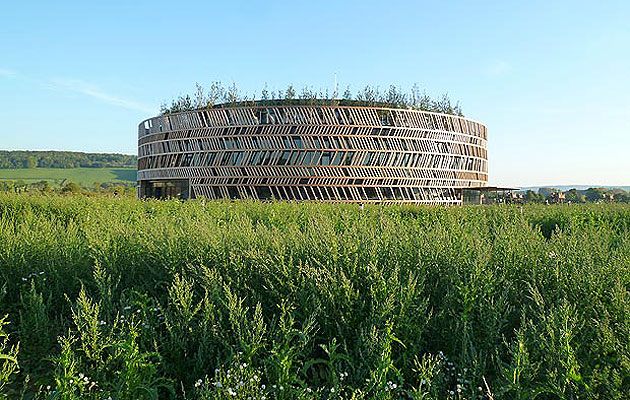|
|
||
|
Bernard Tschumi Architects has finished the first building – an interpretation centre – on an archaeological park near Alise-Sainte-Reine in Burgundy, France. When complete in 2015, the park will include a museum, also designed by Tschumi. Tschumi’s interpretation centre is built on the site of what many, including Napoleon III, believe to have been the site of Caesar’s siege, though the topography does not entirely conform to Caesar’s description of it. Nevertheless, archaeological digs in the 1860s uncovered evidence to support the existence of Roman camps in the area. When completed, Tschumi’s museum will sit at the top of the hill above the town, mimicking the position of the Gauls’ hill fort; the recently-opened interpretation centre is situated in the fields below, occupying the position of the Romans. “The site is historic in terms of the identity of France,” Tschumi explains. “Ironically, the French were defeated, but consider this moment in history as the beginning of a distinct French identity.” Tschumi says the team chose to differentiate the two buildings by using materials that had some relation to the type of fortifications that each army relied on. “But, in a broader sense, the buildings are abstract, so as to distinguish them from the recreated battlements and historical reconstructions,” he adds. Reasoning that the Gallic museum should mimic the look of buildings in the town, Tschumi plans to build it out of local stone. The interpretation centre, on the other hand, is constructed out of wood – “much as the Roman fortifications would have been at the time of the siege,” Tschumi says. A relatively simple cylindrical structure, the centre is wrapped in a timber facade whose patterns resemble tyre treads or arrows in flight. The roof is planted with trees and grass to help camouflage the building when seen from the town above. |
Image Bernard Tschumi Architects
Words Crystal Bennes |
|
|
||



















